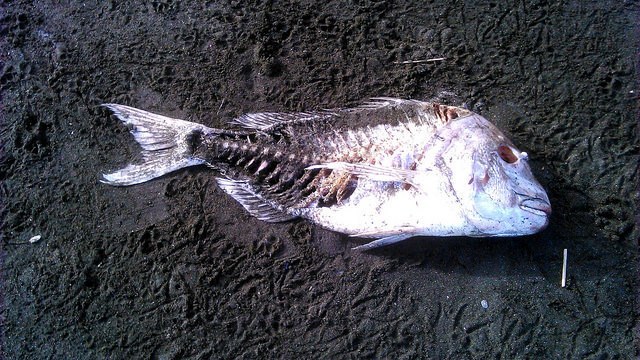You can’t please everyone. But in the case of the marine protection consultation (on which submissions close today), it seems the Government can’t please anyone. That is because the proposals they are putting forward won’t actually solve the problems we are facing in our oceans. There is no better example of this than the issues facing the Hauraki Gulf.
We want more fish in the water – on that point environmentalists, commercial and recreational fishers can all agree. The recent snapper quota decision and current Government proposal for a recreational fishing park won’t achieve that. What would fix the Gulf?
If you didn’t know, the Hauraki Gulf is in trouble. It faces chemicals and mud running off from land, it has had huge mussel beds (which used to clean the water) ripped out of it, and now faces strains from shipping, commercial and recreational fishers.
The recent snapper quota decision will not rebuild fish stocks. Nor would a recreational fishing park – we know that from the experience at Mimiwhangata where commercial operators are banned yet the fish stock hasn’t budged.
Only reduced fishing will rebuild the stock. The Government is offering $20m of taxpayers’ money to compensate fishing companies for setting up the recreational fishing park. Incredibly, this will not reduce the fish they catch, just compensate them for having to travel further. It will not reduce the pressure on our fish stocks, just push that pressure out further.
This is a colossal waste of money, and also a lost opportunity. We should be looking to get the maximum return from the wonderful asset that is the Gulf. That means making it easier for recreational fishers to catch fish, and ensuring that commercial operators focus on the premium market.
The $20m should be used to buy back fishing quota, especially from the more damaging trawler operations, which make up 40% of the catch from the Hauraki Gulf. As an indication of the scale of this issue, between 2011 and 2013 there were almost 12,500 bottom trawls in the Gulf, in addition to 27,000 commercial scallop dredges between 2010 and 2012. Every one of these trawls and dredges disturbs and damages the ocean floor.
The compensation for the remaining fishers for their increased travel would be the ability to market their product as a premium sustainable fishery. Yellow Brick Road already does this with the fish caught in Whitianga, showing the demand is out there.
To hold up their end of the bargain, recreational fishers need to start monitoring their catch. We need to know how many fish are being caught by recreational fishers in the Gulf, otherwise attempts at management are a farce. Commercial operators have even offered to voluntarily cease fishing in the Gulf if recreational fishers monitored their catch – another indication that the Government is throwing $20m away to establish this recreational fishing park.
Recreational fishers also have to accept that they can’t fish everywhere. We need a network of no-take marine reserves as a safe place for breeding stock and to return some environments as close as possible to a pristine state. However, these need to be big enough to make a difference. At Goat Island we saw fish and lobster populations increase after the marine reserve was created, only to be plundered by fishers sitting on their boundaries. There are now fewer crays and snapper in the reserve than when it was established in 1975.
The Government’s offer of a recreational fishing park should be conditional on recreational fishers agreeing to include a representative network of no-take marine reserves nested within it – otherwise no deal.
This stuff isn’t hard, but the Government seems to be totally devoid of ideas on how to go about creating a representative network of marine reserves. At the recent consultation on marine protection, the officials couldn’t explain how the Government’s proposed ad hoc process will achieve their own stated objectives – a complete farce.
Thankfully we already have the Hauraki Gulf Forum, which has been working on these issues collaboratively since 2000. Through the ‘Sea Change Tai Timu Tai Pare’ process, and is now creating a spatial plan for managing fisheries, pollution and protection. This creates the opportunity to plan marine reserves within the recreational fishing park and rebuild fish stocks around them.
The Government’s proposal cuts across the significant buy-in and goodwill generated in the Forum and it would be wise to align its proposal with the recommendations of the ‘Sea Change’ project, expected around September.
Of course, in the long term this alone will not be an answer. As the recreational fishing population (and their fishing power) keeps increasing, they will have to face reduced bag limits or stump up to buy more quota from commercial fishers. But let’s show what is possible in the short term by rebuilding the fish stocks rapidly, through encouraging industry to profit more from fewer fish.
At some point the question arises about who should pay for all this. Tax and ratepayers should certainly not be in the gun. The simple answer is that like on land, businesses operating on the ocean should pay rates. By the same rationale, recreational fishers should chip in their fair share too, whether through a charge on their boats, tackle or a license fee.
That money should be ploughed into buying back quota and improving the ocean environment. For example, the Gulf Forum’s work has spawned the Revive our Gulf group, which is replanting the mussel beds that once covered much of the Gulf’s seabed.
The Ministry for the Environment is consulting on the proposals for marine protection: http://www.mfe.
Submissions close 5pm Friday 11 March. To make it easy to have your say we have created a form for you below, we encourage you to change the text within it before you submit to reflect your own views.
[gravityform id=”1″ title=”true” description=”true”]Photo by orinoko42 via flicr

